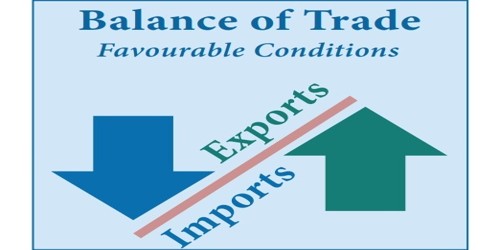
In the dynamic world of forex trading, investors are continually seeking opportunities that could yield significant returns. Emerging market currencies have become a focal point for many traders due to their potential for high growth. However, they are also associated with a variety of risks that can lead to substantial losses.
1. Understanding Emerging Market Currencies
1.1 Definition of Emerging Markets
Emerging markets refer to countries that are in the process of rapid industrialization and growth, characterized by increasing foreign investment, developing economies, and evolving infrastructures. These markets are typically more volatile than developed markets, providing both opportunities and risks for investors and traders.
1.2 Characteristics of Emerging Market Currencies
Emerging market currencies often exhibit specific characteristics that distinguish them from major currencies like the US dollar or the euro:
- Higher Volatility: Emerging market currencies tend to fluctuate more sharply than those of established economies due to external shocks, market speculation, and local economic conditions.
- Less Liquidity: These currencies may have lower trading volumes, making it challenging to execute large trades without affecting the price significantly.
- Greater Sensitivity to Global Events: Emerging market currencies are often more impacted by global economic developments, such as changes in commodity prices and capital flows.
2. Key Emerging Market Currencies

Several emerging market currencies have garnered attention from forex traders. Here are five prominent examples:
2.1 Brazilian Real (BRL)
The Brazilian real is the official currency of Brazil and is often influenced by commodity prices due to Brazil's significant export of agricultural products and minerals. The real can exhibit both volatility and growth potential depending on global demand for Brazilian exports.
2.2 Indian Rupee (INR)
The Indian rupee is the currency of India, one of the fastest-growing economies in the world. Economic reforms, a burgeoning technology sector, and a growing middle class contribute to the rupee's potential for appreciation, although it is also influenced by domestic and global economic factors.
2.3 Mexican Peso (MXN)
The Mexican peso is the currency of Mexico, a significant player in trade, particularly with the United States. The peso often reacts to US economic conditions, trade agreements, and oil prices, making it an interesting currency for forex traders.
2.4 South African Rand (ZAR)
The South African rand is influenced by the country's rich natural resources, especially precious metals and diamonds. Political developments and economic stability can dramatically affect the rand's value, inviting both opportunities and risks for traders.
2.5 Turkish Lira (TRY)
The Turkish lira has been under pressure due to political instability, high inflation, and economic challenges. However, the lira's volatility can offer lucrative trading opportunities, provided traders understand the underlying risks.
3. Factors Influencing Emerging Market Currencies
Understanding the key factors that influence the value of emerging market currencies is critical for traders. Here are some of the most significant factors:
3.1 Economic Indicators
Economic indicators such as GDP growth rate, inflation rate, and unemployment rate play a vital role in determining the strength of a currency. Strong economic performance generally leads to a stronger currency, while weak economic fundamentals can have the opposite effect.
3.2 Political Stability
Political events, including elections, government policies, and geopolitical tensions, significantly impact emerging market currencies. Political instability can lead to currency depreciation as investors seek safer assets.
3.3 Global Economic Trends
Emerging market currencies are often sensitive to global economic trends, especially in developed economies. For instance, changes in interest rates by central banks in developed countries can lead to capital flows into or out of emerging markets, affecting currency values.
3.4 Commodity Prices
Many emerging markets are heavily reliant on commodity exports. As such, fluctuations in global commodity prices can significantly affect currency values. For example, a decline in oil prices can hurt currencies tied to oil-producing economies.
4. Analyzing the Growth Potential of Emerging Market Currencies

Emerging market currencies can present high growth potential, but this is often accompanied by volatility. Here are some points to consider when analyzing this potential:
4.1 Historical Performance
Examining the historical performance of emerging market currencies can provide insight into their long-term growth potential. While history does not guarantee future performance, it can help traders understand typical behavior and seasonal trends.
4.2 Economic Growth Rates
Emerging markets often have higher economic growth rates than developed ones, making their currencies attractive. Rapidly growing economies may lead to increased foreign investment, which could bolster currency strength.
4.3 Market Sentiment and Speculation
Market sentiment plays a crucial role in the currency market. Positive sentiment towards a particular emerging market can lead to increased investment and demand for its currency, resulting in appreciation. Conversely, negative sentiment can trigger a sell-off.
5. Risk Factors Associated with Emerging Market Currencies
While emerging market currencies present growth opportunities, they also come with significant risks. Understanding these risks is crucial for traders.
5.1 Currency Volatility
Emerging market currencies are typically more volatile than those of developed economies. This volatility can lead to large price swings, making risk management essential for traders looking to capitalize on potential profits.
5.2 Inflation Rates
High and rising inflation rates can erode the purchasing power of a currency and lead to its depreciation. Traders must monitor inflation indicators closely, as they can provide insights into currency trends.
5.3 Political Risk
Political instability and changes in government policy can introduce volatility and uncertainty in emerging markets. Traders should keep an eye on political developments that could affect currency stability.
5.4 Capital Flight
In periods of instability or economic downturn, investors may withdraw their capital from emerging markets, leading to depreciation of that market's currency. This can create significant challenges for traders as currency values fluctuate wildly.
6. Strategies for Trading Emerging Market Currencies

To navigate the complexities and risks of trading emerging market currencies, it is essential to employ effective trading strategies.
6.1 Fundamental Analysis
Fundamental analysis involves evaluating economic indicators, news events, and geopolitical factors that could affect currency values. Understanding the underlying economic conditions can help traders make informed decisions about when to buy or sell an emerging market currency.
6.2 Technical Analysis
Technical analysis relies on chart patterns, trendlines, and indicators to forecast future price movements. Traders can use various technical tools to identify entry and exit points, enabling them to capitalize on market volatility.
6.3 Risk Management Techniques
Implementing sound risk management techniques is critical for trading emerging market currencies. This includes setting stop-loss orders to minimize losses, diversifying trades to spread risk, and ensuring position sizes align with risk tolerance.
7. Conclusion
Emerging market currencies offer enticing growth potential, presenting opportunities for significant profits for forex traders. However, they come with substantial risks that must be carefully managed. Understanding the factors that influence these currencies, analyzing their growth potential, and employing effective trading strategies will enhance your chances of success in this dynamic market.
As you consider trading emerging market currencies, remember the importance of ongoing education, vigilance in monitoring economic and political developments, and disciplined risk management. Making informed decisions based on comprehensive analysis can help you navigate the challenges of emerging markets while capitalizing on their opportunities.








